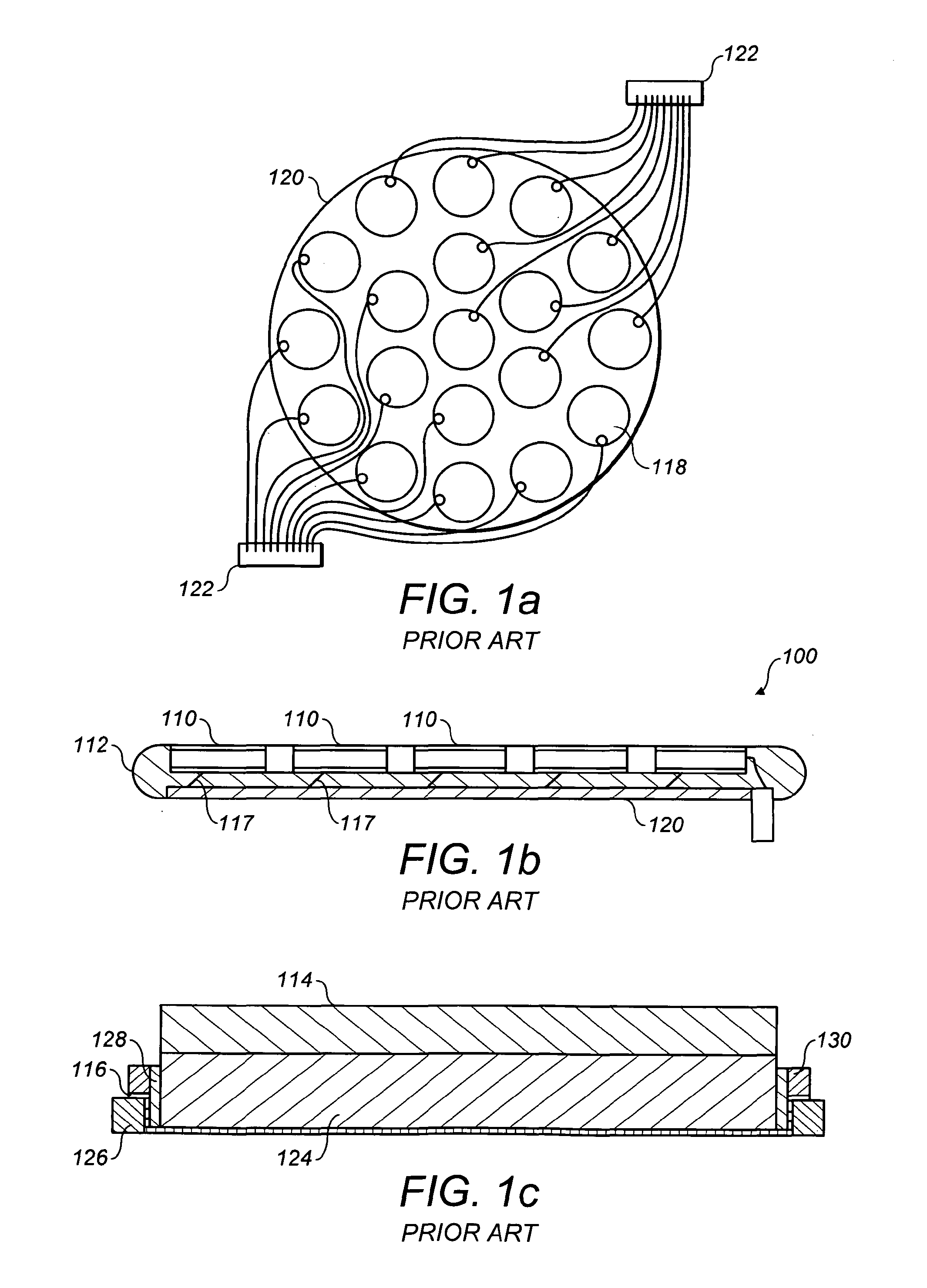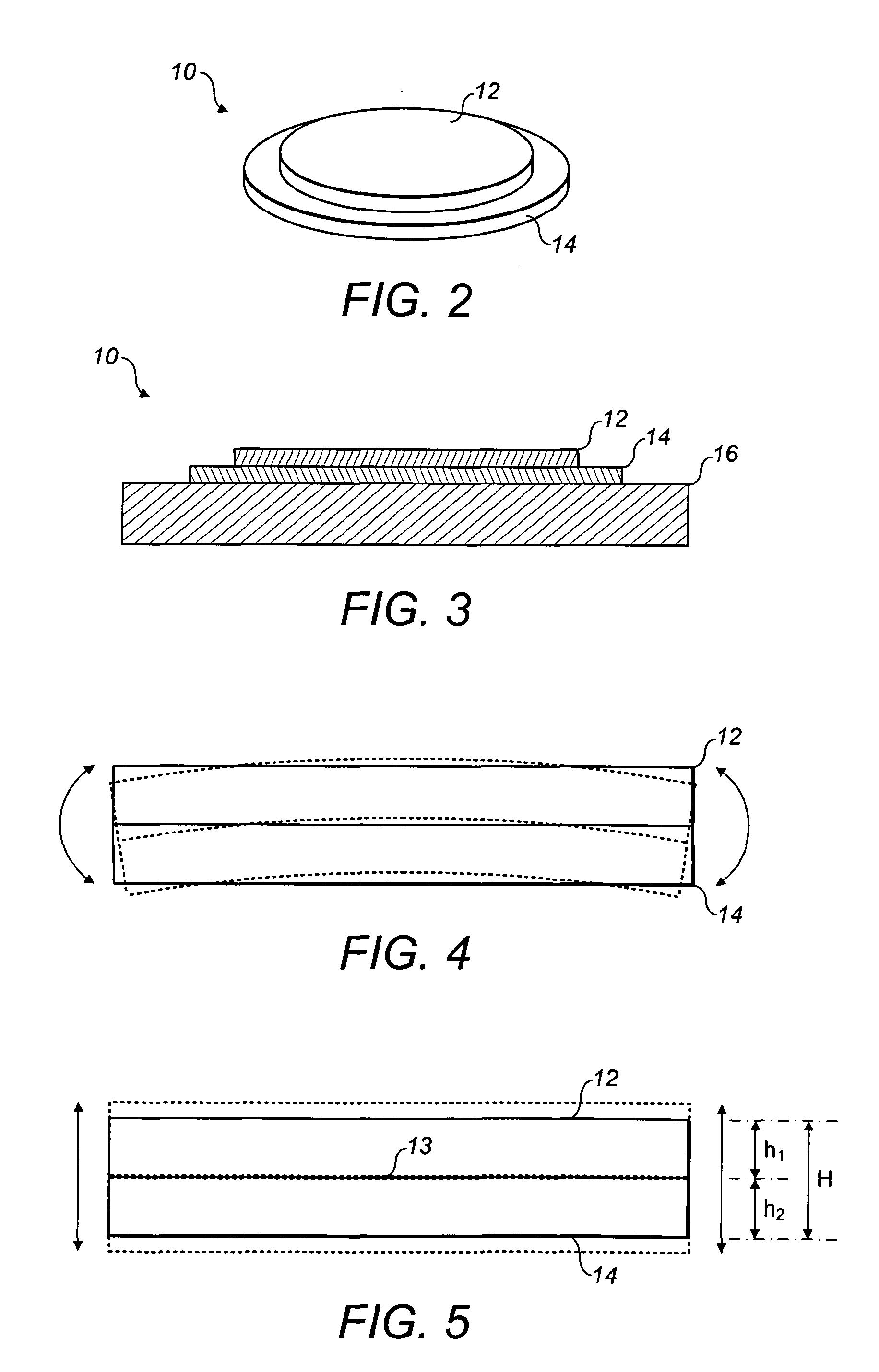Dual-frequency ultrasound transducer
a dual-frequency ultrasound and transducer technology, applied in the field of transducers, can solve the problems of inefficiency of diffusion of substances of molecular weight around 500 da and above, affecting and reducing the effect of bending stiffness, enhancing the reaction force, and maximising the performance of the transducer
- Summary
- Abstract
- Description
- Claims
- Application Information
AI Technical Summary
Benefits of technology
Problems solved by technology
Method used
Image
Examples
Embodiment Construction
[0067]The term “ultrasound” describes sound frequencies of 20 kHz and above, a low ultrasound frequency is herein defined as being from 20 to 500 kHz; a high ultrasound frequency is herein defined as being from 500 kHz (0.5 MHz) to 5 MHz.
Basic construction
[0068]A dual-frequency ultrasound transducer 10 comprises a piezo-electric element 12, which is preferably formed from a piezoceramic material, such as PZT, and an underlying elastic substrate 14. The transducer is a “unimorph”, in other words the piezo-electric element is bonded to the elastic substrate 14. The basic layout is illustrated in FIGS. 2 and 3. The piezo-electric element 12 and the elastic substrate 14 are each planar, disc-like elements. The piezo-electric element 12 is of a smaller diameter than the substrate 14, for a purpose to be described below.
[0069]The transducer 10 is designed to be placed upon an acoustic medium 16, in order to transmit acoustic energy from the transducer into the acoustic medium. In the cont...
PUM
| Property | Measurement | Unit |
|---|---|---|
| temperature | aaaaa | aaaaa |
| molecular weight | aaaaa | aaaaa |
| frequency | aaaaa | aaaaa |
Abstract
Description
Claims
Application Information
 Login to View More
Login to View More - R&D
- Intellectual Property
- Life Sciences
- Materials
- Tech Scout
- Unparalleled Data Quality
- Higher Quality Content
- 60% Fewer Hallucinations
Browse by: Latest US Patents, China's latest patents, Technical Efficacy Thesaurus, Application Domain, Technology Topic, Popular Technical Reports.
© 2025 PatSnap. All rights reserved.Legal|Privacy policy|Modern Slavery Act Transparency Statement|Sitemap|About US| Contact US: help@patsnap.com



